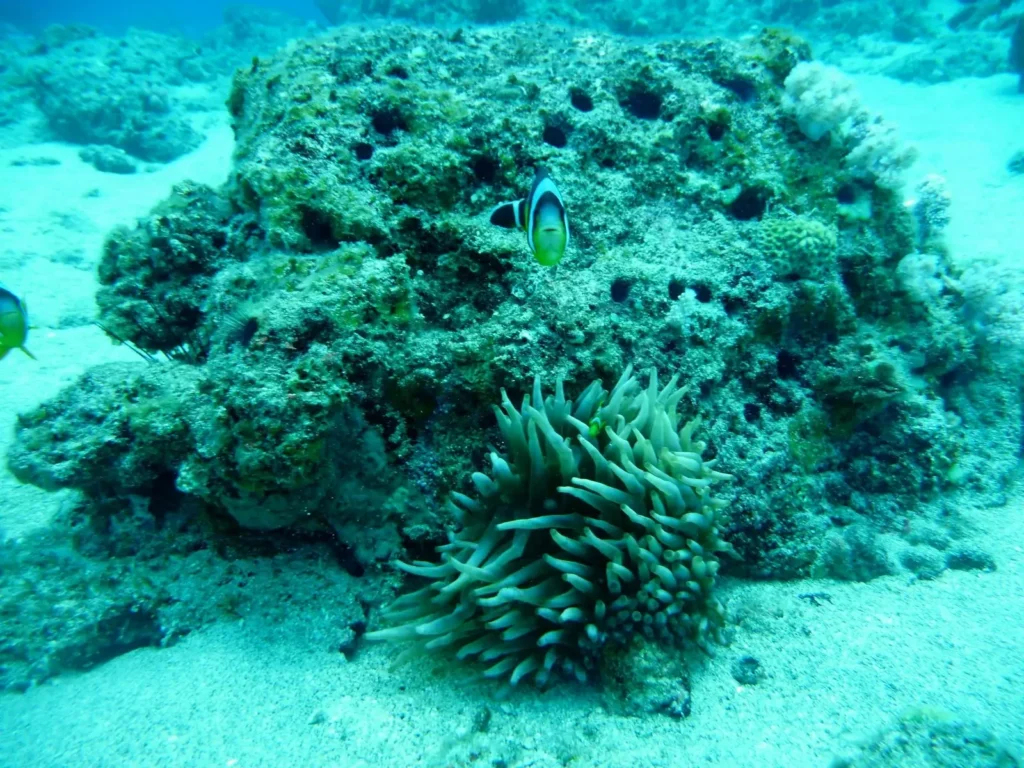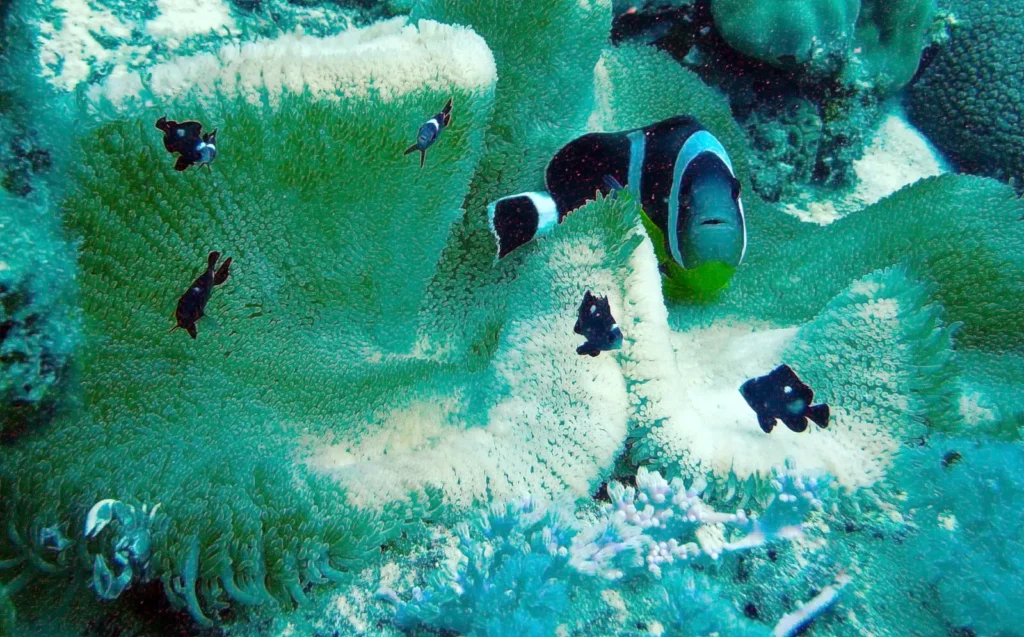Yellow-bellied clown (Amphiprion chrysogaster)- one of the brightest representatives of the family pomacentrovyh (Pomacentridae), which differs from contrasting color and loyalty to your anemone habitat. He black body, bright yellow belly and white stripes make it easily recognizable among other clownfish.
✔ Rare endemic to Mauritius
✔ One of the largest species of clownfish (up to 15 cm)
✔ It lives in symbiosis with stinging anemones
✔ It is marked by aggressive behavior, especially among adult males
This fish an important element of the coral reef ecosystem and popular among aquarists, although it is not easy to maintain.

Scientific classification
✔ The Kingdom: Animals (Animalia)
✔ Type: Chordal (Chordata)
✔ Class: Lucheperi pisces (Actinopterygii)
✔ Row: Perch-like (Perciformes)
✔ Family: Pomacentrovye (Pomacentridae)
✔ Gender: Amphiprions (Amphiprion)
✔ View: Amphiprion chrysogaster
✔ Described: Cuvier, 1830
Title chrysogaster it comes from the Greek words "chrysos" (gold) and "gaster" (belly), which highlights it bright yellow abdomen.
Habitat and habitat
🌏 Distribution:
🔹 Endemic to Mauritius
🔹 Sometimes found in nearby waters of the Indian Ocean
🏝 Living environment:
🔹 Tropical coral reefs at depths of 1-20 m
💥 Prefers warm lagoons (23-30°C)
, Lives in symbiosis with large sea anemones, such as Stichodactyla haddoni
This view territorial departmentthis is why it can be found next to an anemone that protects against potential threats.
Appearance and coloring
🔸 Main Features:
✔ Black Body with yellow sides and belly
✔ Three white stripes - on the head, in the middle of the body and near the caudal fin
✔ Yellow fins and muzzle
✔ Maximum length-15 cm
🔸 Sexual dimorphism:
✔ Females big for males
✔ The dominant female can change color and size
Lifestyle and behavior
✅ Symbiosis with anemones
✔ Protects the anemone and uses its stinging tentacles as a shelter
✔ Cleanses the anemone from food residues
✔ Produces special slime, which protects anemones from burns
✅ Social structure
✔ Lives in the dominant hierarchy
✔ The biggest fish in the group – female
✔ If the female dies, the largest male changes sex
✅ Aggressiveness
✔ Very much territorial fish
✔ Attacks even on humans and larger fishif those approach the anemone

Food
🔹 Basic diet:
✔ Zooplankton (small crustaceans)
✔ Seaweed
✔ Organic residues
🔹 Nutrition features:
✔ Combines plant and animal foods
✔ Can collect leftover food anemones
This fish omnivorouswhich helps it survive in the wild.
Reproduction
🔹 Proteroginal hermaphrodite:
✔ Born as a male, but can change gender
🔹 Spawning process:
✔ Female lays eggs up to 1000 eggs
✔ The male guards the clutch and cleans it
✔ Larvae hatch via 6-8 days
Larvae pass through planktonic stage, which contributes to the dispersal of the species.

Predators and threats
🔸 Natural enemies:
✔ Large predatory fish
✔ Marine predators (large moray eels)
🔸 Threats to the public:
✔ Fish catch for aquariums
✔ Destruction of coral reefs
✔ Rising ocean temperatures
Given that this view Endemic to Mauritius, its population is vulnerable to ecosystem changes.
Yellow-bellied clown in aquariums
🟡 Popularity:
✔ Rare in trade
✔ High price due to the difficulty of the catch
🟡 Aquarium requirements:
✔ Volume: 200 + liters
✔ Temperature: 24–28°C
✔ Salinity: 1.020–1.025
✔ The presence of an anemone is desirable
🟡 Compatibility:
✔ Non-aggressive marine fish
✔ You can't keep it together with other clownfish!
This view is suitable only for experienced aquarists because of the complexity of care.
Interesting facts
, One of the the most aggressive clownfish
🔹 Endemic to Mauritius - not found anywhere else in the world
🔹 Can bite a personIf she gets too close to the anemone
🔹 Lives up to 15 years in nature
Conclusion
Yellow-bellied clown (Amphiprion chrysogaster) – unique clownfish with gorgeous contrasting color, what it is known for its aggressiveness and devotion to anemones.
📢 Its future depends on preserving Mauritius ' coral reefs and ecosystem! 🌊🐠💛